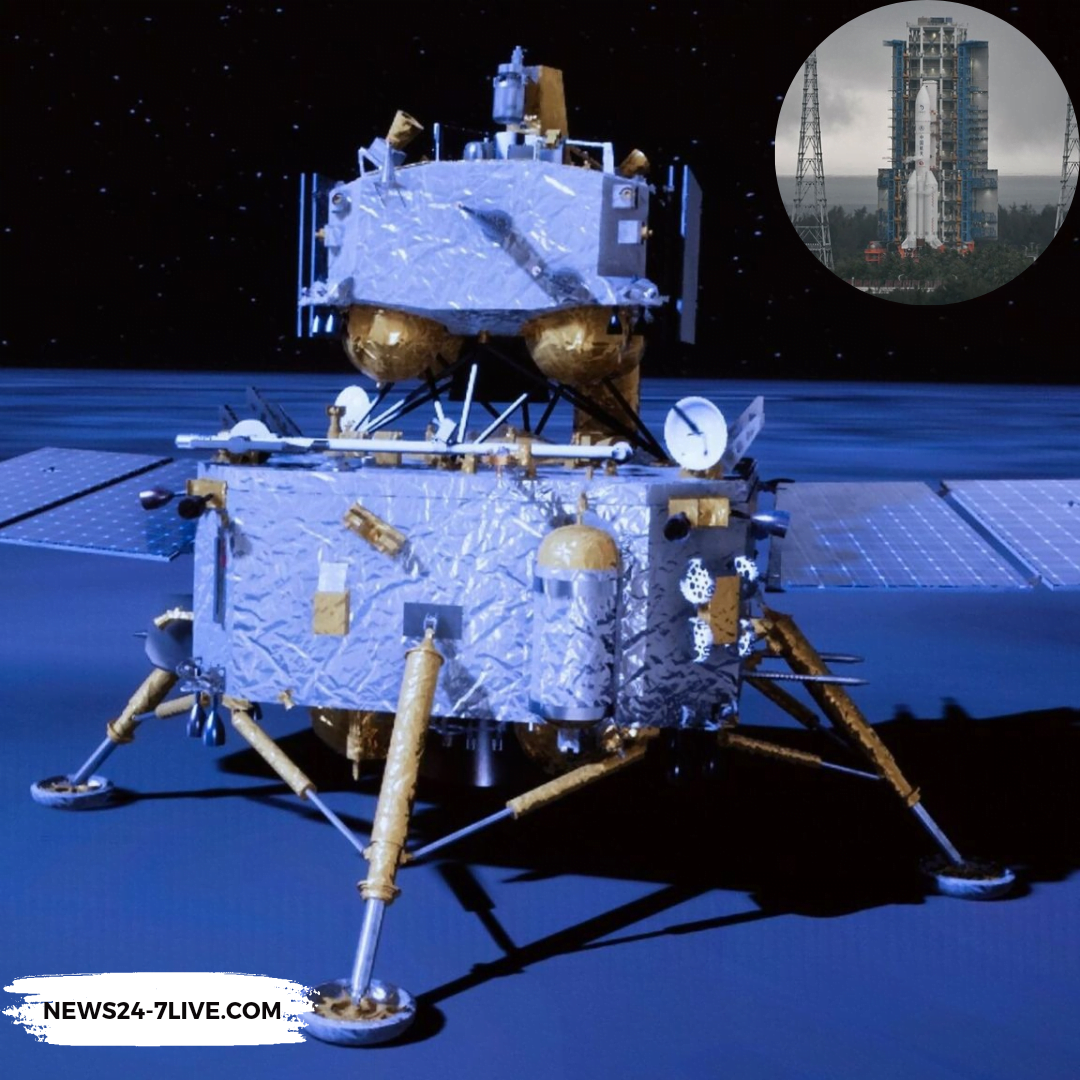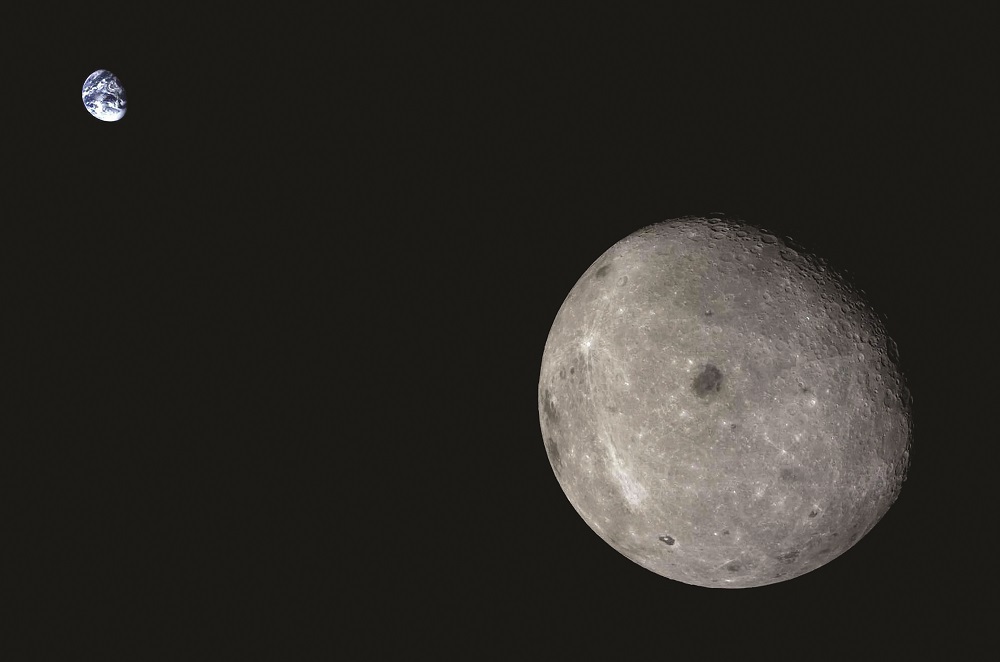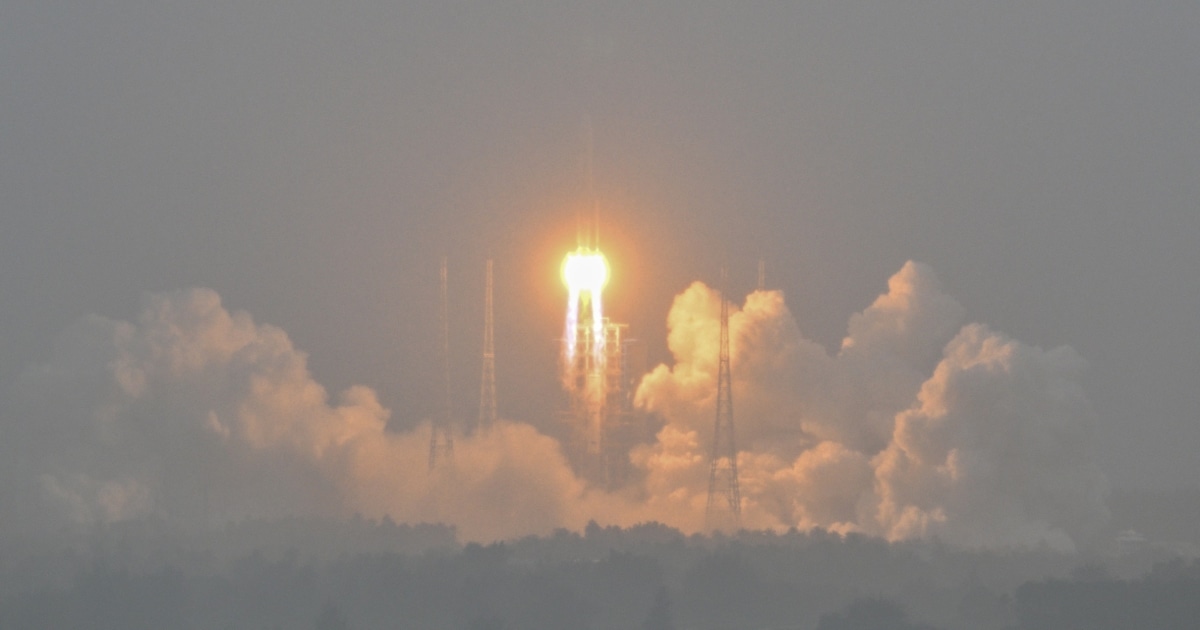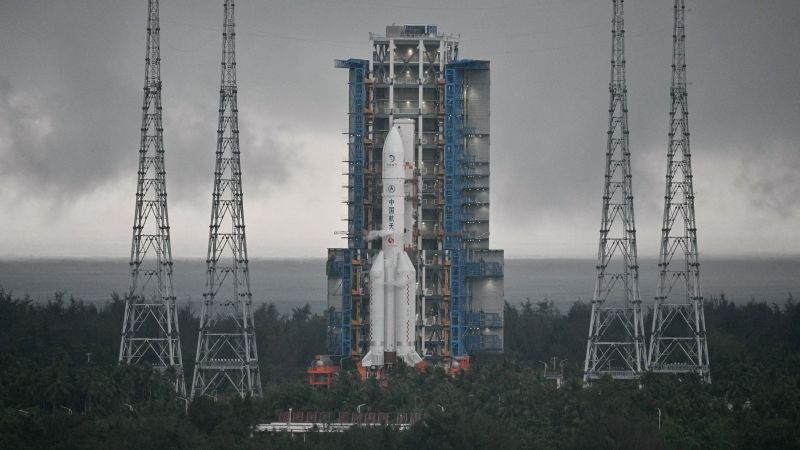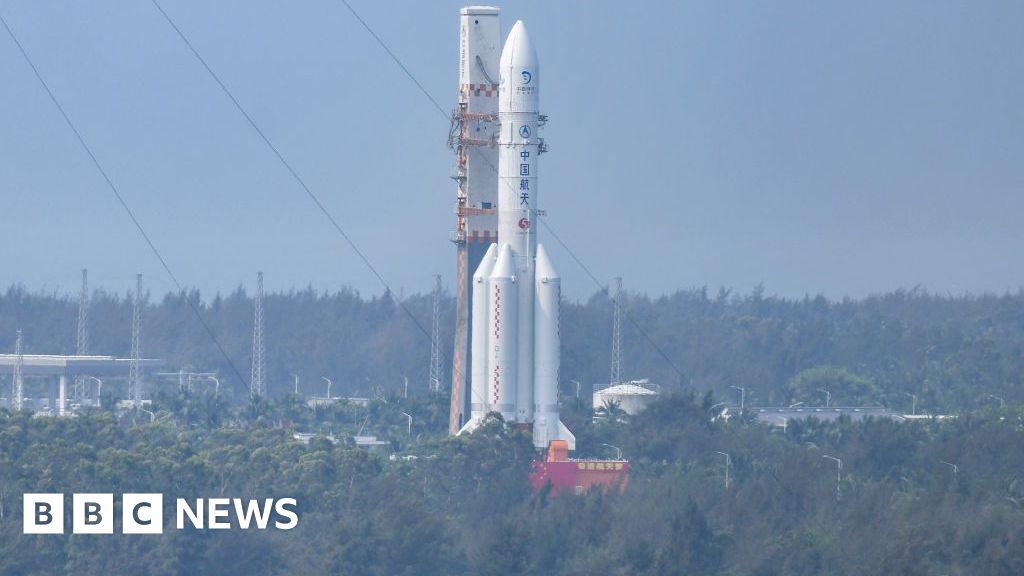China has successfully landed its Chang’e 6 lunar probe on the far side of the moon, state media reported on Sunday. This mission was launched last month planning to collect soil and rock samples from the moon’s far side. This is the first attempt of its kind in space exploration.
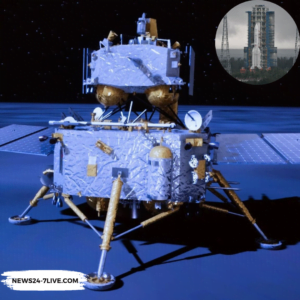
Also Read: Billionaire Larry Connor Plans Safe Titanic Submersible Expedition
The Chang’e 6 spacecraft was launched on May 3, 2024, aboard a Long March-5 rocket from the Wenchang Space Launch Site in Hainan Province, China.
The Chang’e 6 probe successfully touched down on June 2, 2024, at 6:23 a.m. Beijing time in the South Pole-Aitken Basin. The entire mission is scheduled to last 53 days concluding with the return of the collected samples to Earth by June 25, 2024.
The South Pole-Aitken Basin, one of the largest and oldest impact craters in the solar system, is the chosen landing site for its potential to provide valuable scientific insights.
The Chang’e 6 probe landed in the South Pole-Aitken Basin, specifically within an impact crater known as the Apollo Basin. This basin is one of the largest known impact craters in the solar system spanning approximately 2,500 kilometers in diameter.
This is the second successful landing on the far side of the moon following China’s Chang’e-4 mission in 2019. No other country has achieved this feat.
Chang’e 6 aims to collect up to 2 kilograms of lunar soil and rock samples. The collected samples are expected to provide insights into the origin and evolution of the moon, Earth, and the solar system.
The mission is China’s most complex robotic lunar endeavor to date. It involves multiple phases including sample collection, storage, and return to Earth. The mission began on May 3 and is expected to last for 53 days.
The Chang’e 6 Probe is Composed of Four Parts:
- An orbiter
- A lander
- An ascender
- A re-entry module
The Chang’e 6 will use a drill and a mechanical arm to gather lunar soil samples. The sampling process will involve collecting material both from the surface and from up to 2 meters underground.
The Chang’e 6 will spend two days on the moon’s surface with 14 hours dedicated to collecting samples. The collected samples will be stowed in the ascent vehicle which will then launch back to lunar orbit.
The ascent vehicle will dock with the orbiter, transferring the samples to a re-entry capsule. The capsule and orbiter will travel back to Earth with the capsule expected to land at the Siziwang Banner Landing Site in Inner Mongolia later this month.
The far side of the moon is out of range of direct communication with Earth. To overcome this China launched the Queqiao-2 relay satellite in March 2024 to facilitate communication between the probe and Earth.
The lander used an autonomous visual obstacle avoidance system, employing a visible light camera to select a safe landing area based on the lunar surface’s brightness and darkness.
The lander hovered about 100 meters above the selected area before making a slow vertical descent using a laser 3D scanner to ensure a precise landing.
Also Read: Crows Can Count One to Four, Study Reveals
The samples collected by Chang’e 6 could provide clues about the moon’s history and its differences from the near side, where volcanic seas known as maria are more common.
Understanding these differences could answer fundamental questions about planetary formation and the origin of water in the solar system.
The mission is part of China’s strategy to become a dominant space power. Future plans include landing astronauts on the moon by 2030 and building a research base at the moon’s south pole, a region believed to contain water ice.
Other nations, including the United States, India, Russia, and Japan, are also pursuing lunar missions. India successfully landed a spacecraft on the moon for the first time last year.
Russia experienced a setback with the Luna 25 mission which crashed on the moon’s surface. Japan faced challenges with its Moon Sniper lander due to power issues.
United States recently saw a successful landing with the NASA-funded IM-1 mission designed by Texas-based private firm Intuitive Machines.
China plans to launch two more Chang’e series missions before 2030. The Chang’e-7 mission scheduled for 2026, will assess the resource potential of the moon’s south polar region.
Chang’e-8, set for 2028 will test methods for utilizing lunar resources on-site. The United States plans to return astronauts to the moon by 2026 through NASA’s Artemis program. NASA’s goal includes establishing a scientific base camp on the moon.
After landing, the Chang’e-6 probe will spend approximately two days collecting samples. These samples will be stored in a metal vacuum container. The ascender atop the lander will transport the container back to an orbiting module.
The container will then be transferred to a re-entry capsule which is expected to return to Earth in the deserts of Inner Mongolia around June 25, 2024.
Chang’e 6 is the sixth mission in China’s lunar exploration program following the Chang’e-5 mission in 2020, which successfully returned samples from the near side of the moon.
This mission builds on the success of Chang’e-4, which in 2019 became the first spacecraft to land on the far side of the moon.
China has developed its own space station, Tiangong, which has been operational since 2021 after being excluded from the International Space Station.
China has also successfully landed a robotic rover on Mars. China plans to send a crewed mission to the moon by 2030 and to bring back samples from Mars within the same timeframe.
Also Read: NASA Launches PREFIRE Mission to Study Earth’s Polar Regions
